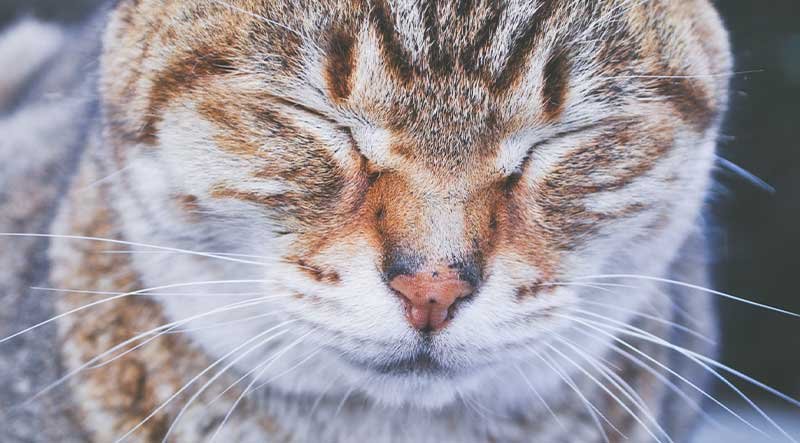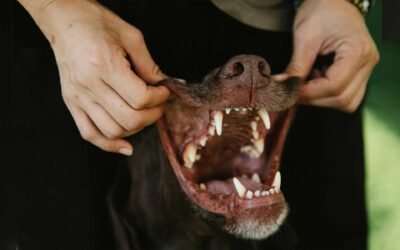Are you a new pet parent and still trying to find your footing in the world of furry companions? Embarking on the journey of pet parenthood is like stepping into a world of boundless affection. Just as new parents encounter multiple challenges and sleepless nights, navigating the realm of pet parenting requires patience, understanding and a commitment to bond with the new family member. As new pet parents we want to give our little ones ‘Nothing but the Best’.
The initial days of this journey can be overwhelming. As new pet parents we are still figuring out the dos and don’ts of pet parenting. Understanding and decoding common pet behaviours can deepen the bond between us and our furry companions.
Here are some tips to help you embark on this new adventure-
Tail wagging
Tail wagging is one of the most common behaviours in dogs. This behaviour is often associated with sheer happiness and excitement. As a new pet parent, pay attention to your dog’s behaviour, if the tail wagging is fast and vigorous it is an indication of a positive emotional state, either joy or enthusiasm. If you find that your little ones are wagging their tail at a slow pace it could signal uncertainty or caution. For our feline companions, a tail swinging back and forth indicates indecision, assessing a situation, or happiness, while a tail held up signals contentment and readiness for petting.
Try and understand the context in which the tail wag occurs to decipher its meaning accurately.
But new mommies and daddies, if you are welcomed home with a vigorously wagging tail, your little ones are surely happy to see you !!
Purring
Purring in cats is typically associated with a positive mental and emotional state. While purring is commonly linked with happiness, cats may also purr when they are anxious, hungry or in pain. It’s essential to understand the context in which your cat purrs. For example, a cat purring at a veterinary hospital may actually be experiencing high levels of stress and fear. In such situations, cats often purr as a means of self-soothing or communicating appeasement. If your cat purrs when they are being petted it is a clear sign that they are in a state of contentment and are feeling calm, relaxed and comfortable.
So the next time you hear the soft rumbling sound out of your kitty, while she is basking in the warmth of the sun with her eyes partially closed, she is living her moment of comfort and contentment to the fullest.
Body Language
According to experts, much of our pets’ communication is conveyed through their behaviours and postures.
Relaxed Body Language in Canines include
- Mouth hanging open, with corners turned up slightly (Looks like your dog is smiling) – Your little one is in a happy headspace
- Soft eyes, relaxed squinty gaze with pupils not dilated
- Relaxed fur – Clear indication that your dog is feeling good
- Ears held at normal position
- Bowing (When your little one is in the yoga position) – Ready for playtime
Aggressive Body Language in Dogs
- Bared teeth
- Wide eyes and direct stare – Your dog is readying for combat
- Alert ears, tall erect (stiff) stance and closed mouth with tightly clenched jaw
- Snarling and snapping
- Fur on their back and hind quarters stands on end or bristles
- Frozen body
- Forward-leaning body posture

Photo by Austin Kirk on Unsplash

Photo by Austin Kirk on Unsplash
Here are several cues to observe in our feline companions
- Body hunched, tail lowered: Fear
- Puffed-up fur and stiff body posture: Fear or readiness to fight
- Ears flattened backward: Defensive stance/ Fear Posture
- Dilated pupils: Fear or surprise
- Ears half closed: Relaxed and content
- Ears twitching with head turned: Curiosity or interest
Learning to interpret these cues can provide valuable insights into your pet’s emotions and intentions.
Whisker Position
Your furry companion’s whisker position is an equally good indicator of their emotional state. If your cat has a neutral whisker position slightly to the side, it is often an indication of a calm, happy and relaxed state of mind.They are normally at ease and in their comfort zone. If you observe that the whiskers are pulled forward and fanned out, then your cat is excited, curious and engaged in some action that is of interest to them. If your dog’s whiskers are upright, then it is an indication of being alert and engaged, but if the whiskers are close to their face then they are anxious or feeling timid.

Photo by Priscilla Du Preez on Unsplash
Pawing
When your pet gently taps with their paws, accompanied by an aww-dorable expression, they are seeking your attention. Pawing is often an indication that your pet wants something from you – whether it’s food, attention (spend some quality time with you), protection or to communicate that they are sick or in pain. It’s their way of bonding with you.
Grooming
Pets typically groom themselves to maintain cleanliness and comfort. In addition to this, they often lick their fur to regulate their body temperature. Cats, in particular, have an extensive grooming routine.

Photo by Téa Bell on Unsplash
Some start by licking the chin and whiskers before moving on to each shoulder and foreleg. Next, they’ll groom both flanks, hind legs, genitals, and finally, their tail from base to tip. Dogs may not groom themselves as thoroughly as cats, but self-bathing and grooming remain typical behaviours for them.
For instance, you might observe your pup licking their paws after being outdoors to rid them of dirt and debris. However extensive grooming and licking of fur is again a matter of concern as they are signs of your pet facing a fear or anxiety issue.To know if your pet is facing mental health issues you can check out our blog on Signs that your pet is facing Mental health issue.
Smelling Genital Area
As a first-time pet parent you wouldn’t know that a little crotch sniffing is no big deal and is considered as a natural behaviour for dogs. While it may seem embarrassing, it’s important to understand that it’s your dog’s way of learning more about you, like identifying the age, health and mood of the individual. The scent of a human body is interesting to a dog, and he just wants to figure out what’s going on and doesn’t see it as bad manners. If the behaviour gets bothersome, curb it with a bit of pet training. Discourage it gently and reward them with a treat and verbal praise for not doing that.
These are some common behaviours you will get to witness on a day to day basis as a New Pet Parent. By taking time out to understand your little one’s behaviour and by being patient, observant and responsive to your pets needs, you can build a strong and rewarding relationship with them. Enjoy the love and warmth that this journey brings, as you welcome the new member in your family!!




0 Comments